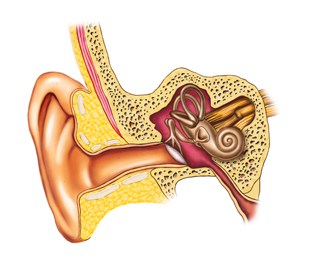Why it is better to Test Your Hearing Sooner rather Than Later
As we all unfortunately know, hearing capacity can become compromised as we age. The trick is to do something about this sooner rather than later. It is not just about you either! Some of my (particularly male!) friends are starting to become a little deaf and this drives me demented. They talk at me with their ear cupped and pointed in my direction which apart from not being a good look, makes normal communication challenging.
When Should You Get Tested?
Best to get tested when you have an inkling that you might not be hearing as well as you used to. Otherwise if you are over 65 then you most certainly need to have a hearing test as a matter of course. It is not just about a lack of hearing. Most of us think that those who have hearing loss are unable to hear sounds loudly enough, but hearing loss actually causes four key problems:
- Inability to hear soft sounds
- Inability to hear key parts of specific speech sounds
- Difficulty in separating sounds, creating a jumble of voices and background noise
- Loud sounds may become intolerable because of reduced range of hearing
What Tests Are Available?
Hearing tests are able to measure what sounds you can and can’t hear, and results will show the type of hearing loss, and also the degree. There are a variety of tests available, and the results from the tests are plotted on a special type of graph called an audiogram. The audiogram is able to determine your hearing thresholds, or how loud sounds need to be before you are able to hear therm.
Hearing loss is measured in decibels (dB), which is able to measure the intensity of the sound. Pitch is measured in hertz (Hz), which measures frequency.
How is Hearing Tested?
Pure tone audiometry is the simplest test of hearing ability. In this test, you will listen to ‘pure tones’, a range of beeps and whistles. You then indicate when you are able to hear these sounds. There is then a reduction in the loudness of each tone, until you are just able to hear it. Your hearing thresholds are the softest sounds that you are able to hear.
Air conduction also involves the use of pure tones, but through headphones. The sound travels through the air, down into the ear canal, passing through the middle ear to the cochlea of the inner ear.
How sensitive your cochlea is can also be assessed with bone conduction. This involves the placement of a small vibrator on the mastoid bone (situated behind the ear). Sounds pass through the skull bones, bypass the middle ear, and reach the cochlea and hearing nerves.
Results of Air and Bone Conduction Tests
Bone conduction and air conduction and tests are able to show a clinician where the hearing problem is situated. There is no sound blockage in the middle or outer ear, if bone conduction hearing thresholds are the same as air conduction thresholds. Instead, there may be a loss of sensitivity in the cochlea or hearing nerve, also known as sensorineural hearing loss.
If there is hearing loss with the air conduction test, but no loss with bone conduction, it suggests that the cochlea is otherwise healthy. Instead, the outer or middle ears may be blocked, known as conductive ear loss. Some individuals can have mixed hearing loss, which is both conductive hearing loss and sensorineural hearing loss.
Tympanometry
This is not a hearing test; instead it assesses the function of the middle ear system, and also how effectively the eardrum is able to move. A small volume of air is pumped into the outer ear canal, from a small rubber tip. The results from tympanometry can show where there is a blockage in the middle ear, and can also help a clinician to assess whether treatment is available.
Speech Discrimination Tests
Being able to hear speech is about the ability to detect speech sounds, and the ability to understand the speech. Ranges of audible sounds and degrees of hearing loss are incredibly varied from one person to the next.
With hearing damage, the amount of sound heard, and the volume of sound heard are not the only two effects. There can often be distortion of sound quality, and how much distortion occurs can be measured with the use of speech discrimination tests.
Where Should You Go to Get Your Hearing Checked?
Go to your GP and get a referral to an audiologist.
Hearing tests are widely available. After the age of 65, or earlier if we have any risks for hearing loss, we should get a full hearing check at least every three years at our local hearing centre. For anyone who wonders if their hearing is not what it should be, a fifteen minute hearing screening is an easy way to find out more about your hearing and what can be done to help. Australian Hearing offers free hearing screenings at its centres nationally. Call 131 797 to be connected to your nearest centre.






